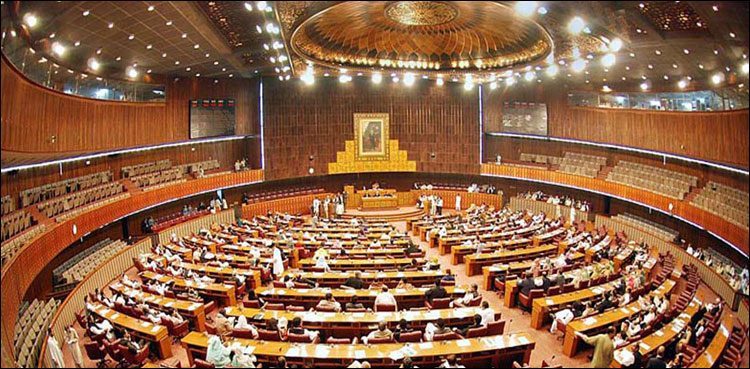ISLAMABAD: Upon the conclusion of second year of the 5-year term of the 15th National Assembly, while there has been some improved legislative activity, there remain many worrying signs on Key Performance Indicators (KPIs) as analysed by PILDAT.
Within Legislation 15th National Assembly has passed 3 times or 200% more bills than in the first year by passing 30 laws in the second year, compared to only 10 laws during the first year. However only 21 of these have been passed by both Houses of Parliament and received Presidential assent to become Acts of Parliament.
Regarding Ordinances despite this increase in legislative activity, the PTI-led Federal Government has more frequently bypassed the Parliament during second year by promulgating 31 ordinances during the year. This is an approximately four and a half times or 343% increase from year 1 when the Government had promulgated only 7 ordinances.
While passage of more legislation by the National Assembly should have been welcomed, the most problematic aspect of this legislative activity, and one that hurts national pride and sovereignty, is that some of this Legislation is not based on National Indigenous Initiatives to Remove Structural and Procedural Weaknesses, and to improve Democratic Governance in Pakistan. Instead, the Federal Government has proposed and passed a number of bills or amendments to existing legislation based on commitments with the International Monetary Fund (IMF) or the Action Plan agreed with the Financial Action Task Force (FATF). This includes laws and amendments relating to State Bank of Pakistan (SBP), National Electric Power Regulatory Authority (NEPRA), State-Owned Enterprise (SoE) law, and Anti-Money Laundering (AML).
Prime Minister’s Attendance of the Assembly sessions is another KPI, which, at only 19% attendance of the Assembly’s sittings during year one, was already in need of improvement. Unfortunately, in year 2, PM’s attendance percentage has further plummeted by 55% as he only joined 8 out of 89 or a meagre 9% sittings of the National Assembly during the second year. Interestingly, combined average attendance of Prime Ministers Nawaz Sharif and Shahid Khaqan Abbasi during the 5-year term of the previous 14th National Assembly was 14% which is exactly the same as the combined average of Prime Minister Imran Khan’s two-year attendance, and 5 percentage points higher than Prime Minister Imran Khan’s attendance during the second year.
Attendance of the Leader of the Opposition, Mr. Shahbaz Sharif, has also declined by 94% compared to year 1. During the second parliamentary year, Mr. Shahbaz Sharif attended 3 out of 89 or only 4% sittings of the Assembly, as opposed to 53 of the 96 or 56% sittings he had joined during year 1. Overall average attendance of MNAs in National Assembly proceedings has also seen a decline from 73% in year 1 to 64% in the second year, perhaps largely due to coronavirus pandemic.
National Assembly has also met for fewer days in second year, possibly again due to coronavirus pandemic, as compared to year 1. The actual working days at 89 during the second year, have nominally decreased by 7% from year 1 when Assembly had met for 96 days. The Assembly should be commended for exceeding (140 days) the constitutionally required minimum (130 days) working days (inclusive of 2-days breaks) despite the constraints imposed by COVID-19.
An important KPI, Working Hours spent in each Assembly sitting, has seen an increase of 31% from year 1. 15th National Assembly has spent 43 additional working hours by putting in 340 hours and 34 minutes in its second parliamentary year compared to 297 hours and 18 minutes in the first parliamentary year. The average working hours in the second parliamentary year was 3 hours and 50 minutes per sitting as compared to 2 hours and 55 minutes per sitting in the first parliamentary year.
The crucial Budget Session has seen a slight increase in number of days and working hours utilised for budget scrutiny. During the second year, 15th National Assembly has spent 18 days, compared to 16 days in first year, and spent 104 hours and 14 minutes, compared to 89 hours and 27 minutes spent in budget session in the first year. This slight increase has not helped move the dial from the 14-day average spent in budget scrutiny in the National Assembly in the past two decades.
Within Committees and their Performance, Owing mainly to political polarization and inability of the PTI-led Government to take opposition parties along, 15th National Assembly had experienced an extraordinary delay of five months and 23 days during the first year in the formation of its Standing Committees. After the Formation of Committees, which are critical for the Scrutiny of Legislation and oversight of the executive, there is no organized information made available online by the Assembly on the work of each standing committee. A few reports of the committees are made available online, which are laid down by committees from time to time in the house, and usually relate to legislation referred to the committees.



